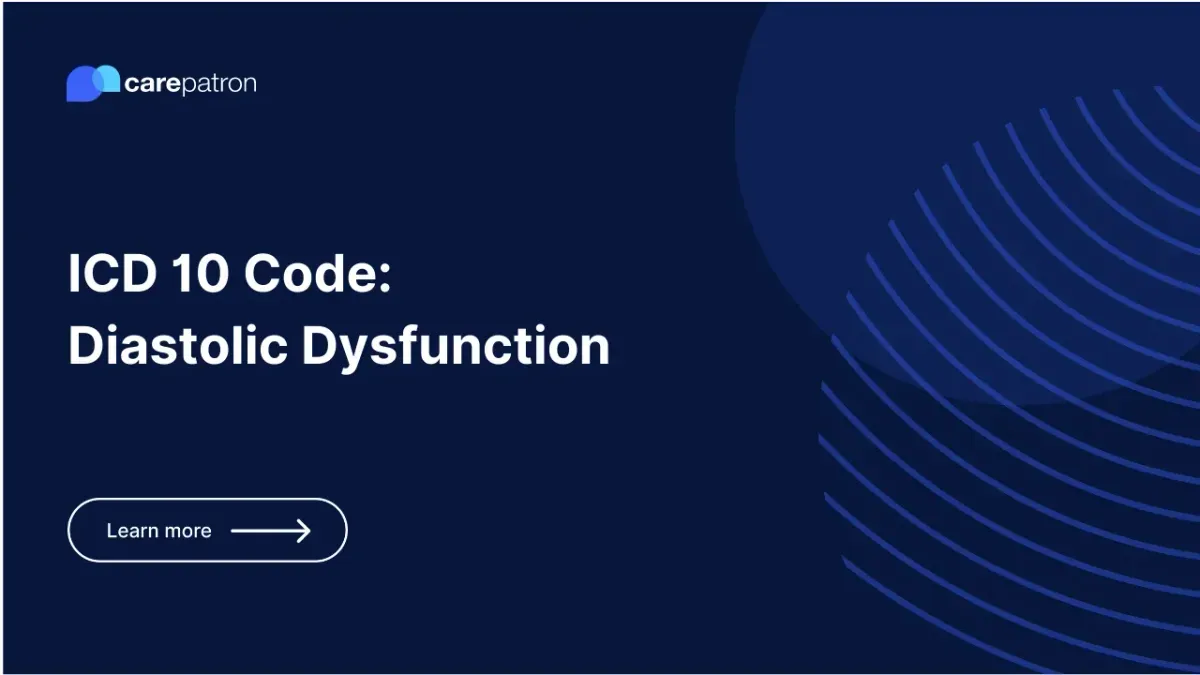
Diastolic Dysfunction ICD-10-CM Codes
Learn about the diastolic dysfunction ICD codes you can use through this guide.
Use Code
Commonly asked questions
Diastolic dysfunction refers to a problem with the heart's ability to fill with blood, while systolic dysfunction refers to a problem with the heart's ability to contract and pump out blood.
Treatment for diastolic dysfunction typically involves managing underlying conditions, such as hypertension or diabetes. While it may not be fully reversible, the progression of the disease can often be slowed with appropriate treatment.
Early stages of diastolic dysfunction may not have noticeable symptoms. As the condition progresses into diastolic heart failure, symptoms like fatigue, shortness of breath, rapid or irregular heartbeat, and edema may occur.
EHR and practice management software
Get started for free
*No credit card required
Free
$0/usd
Unlimited clients
Telehealth
1GB of storage
Client portal text
Automated billing and online payments
